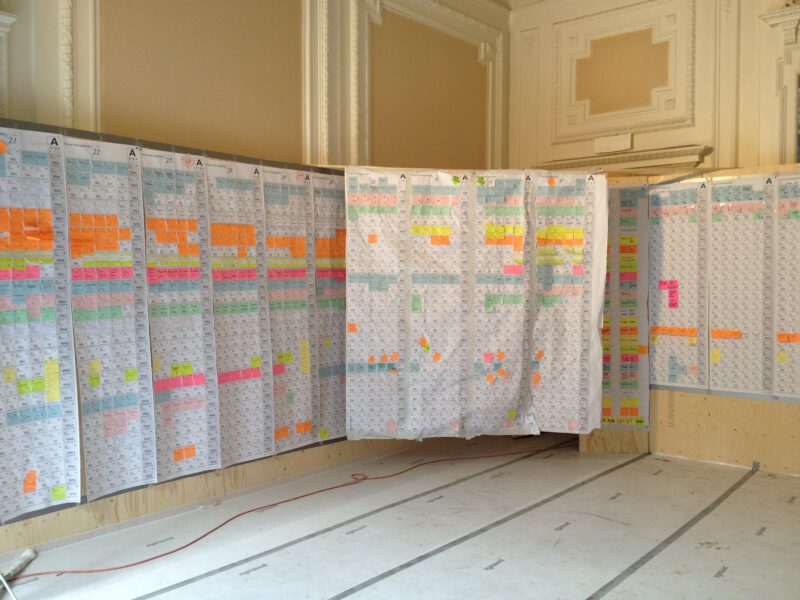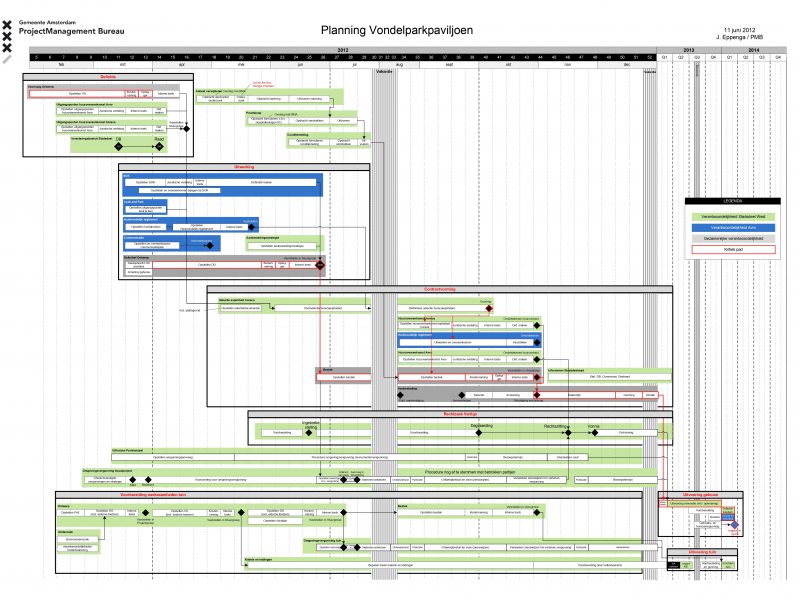 Some weeks ago we started the graduation course REDESIGN. I hope it will be an interesting course but I have to admit that the notion ?REDESIGN? could need some explanation. REDESIGN has a physical meaning when referred to the refit of buildings or city districts. But REDESIGN is also about the process that is needed to make it all come thru. Let me try to shed a little light on the notion of Redesign.
Some weeks ago we started the graduation course REDESIGN. I hope it will be an interesting course but I have to admit that the notion ?REDESIGN? could need some explanation. REDESIGN has a physical meaning when referred to the refit of buildings or city districts. But REDESIGN is also about the process that is needed to make it all come thru. Let me try to shed a little light on the notion of Redesign.
There is ample literature and case information on city redevelopment and refit of buildings. But if it comes to the process side of redesign in the build environment there is hardly literature or research available. Maybe I will come back on the issue of literature in a next post. For now I want limit myself to the notion of process redesign related to city development.
Why process redesign in the first place?
To my opinion you not only have to design the physical world (buildings, public space, cities) but you also have to design the process to realise it. We all know that realising projects is about governance, scheduling, setting the right budget, financial control, tendering, managing design integration, about quality management, about stakeholder management and so on. A Project is not working with pencil and paper only, it is about negotiation, dialogue, decision making, discussion, framing, selling, bargaining as well. Stuart Clegg even speaks about ?talking construction into being?.
Developing buildings can take years, city districts even decades, and over time the world changes and the context of your project as well. Can you ignore that? Can you stick to the original plan? Or do you need to adapt? During the course-introduction Hans Wamelink called it ?the intended strategy? at the start and ?the emergent strategy? along the way. You always need to adapt your plan or approach over time to be able to cope with external and internal change.
When is a change of strategy needed?
If you are already building and the contractor is realising your design, please stick to the physical plan! Because changing the physical design during construction will cost! But if the process evolves not according to plan, change of plan is possibly needed. This can be during preparation, during design but also during construction. I will give some examples.
Internal problems
If the project organisation is not effective, you maybe have to change its composition. If your contractor is not acting according the contract you maybe have to change your communication. Maybe you even have to sue him. This is, for me, a change of pan in order to reach goals.
External problems
The impact of the outside world on a project can be big. Think about economic changes. The last decade the economic downturn had a devastating impact on the building industry; bankrupting hundreds of firms. Thousands of projects needed to change their strategy. To stop a project is also a change of strategy, but it can be regarded as radical.
But also social and public opposition to a project could lead to redesigning a process or strategy. Think about the Amsterdam new Subway-line where the engineers thought the project was purely technical, forgetting there was a city annoyed by all their mistakes. Process redesign was needed to cope with the technical problems but more important to take into account inhabitants and business interest.
Another example with dramatic impact on a project is when your contractor goes bankrupt during construction. You will have to set up a new, maybe temporally organisation to deal with this.
Managers need to be flexible and adapt their strategies or working methods to cope with internal and external change.
What do you need to change?
If problems occur do you know exactly what to adapt? You don?t need to adapt the good parts of the project, only the inefficient ones or the ones causing problems. Sometimes this could be simple but in complex projects changing a strategy never is. Complexity is like a plate of spaghetti; everything intertwined and connected.
The director of the Amsterdam subway had to change the mind-set of the organisation so that the interest of citizens and business was taken into account; in a serious way of course. He had to adapt large parts of the organisation, hired specialist to deal with citizens, lawyers to settle damage costs and communication experts to deal with the press. Technical staff was no longer in the lead and a more societal oriented staff took over.
Are you able to change?
The above sounds reasonable, not? But the question is if you’re able to change or redesign your approach, strategy or process. For change, effort, time and always money are needed. And this is not always at hand.
Think about hiring extra personal, changing contracts and negotiating about it, discussion about options and also the risks that could come along. You don?t want to redesign a process causing new failure in the future. But how can you be sure? Maybe you need to do two things at the same time: redesigning and in the meantime facilitating the ongoing process: working double as hard to solve the problem and REDESIGN.
Who is responsible?
Responsibility is the last topic I want to discuss. This is a question of ownership. It is the legal part of failure and change. If things go wrong, there is always someone to blame. Someone has to pay for the delay and costs related to redesign! If the contractor fails to fulfil his obligations, costs of delay will be on his account. But if the client causes delay and redesign is needed the costs will be his. If the Architect fails to design a building according to the budget, than he has to make a new design on his account.
Last but not least?. If you are the manager and you mess up things, you will be replaced by another manager. Could be a very effective act of redesign! GOOD LUCK!
Some readings:
Stuart Clegg: Talking construction into being (2005)
Ernst ten Heuvelhof en Jeroen van der Heijden: Onderzoekscommissies en evaluatie rapportages. 2011






